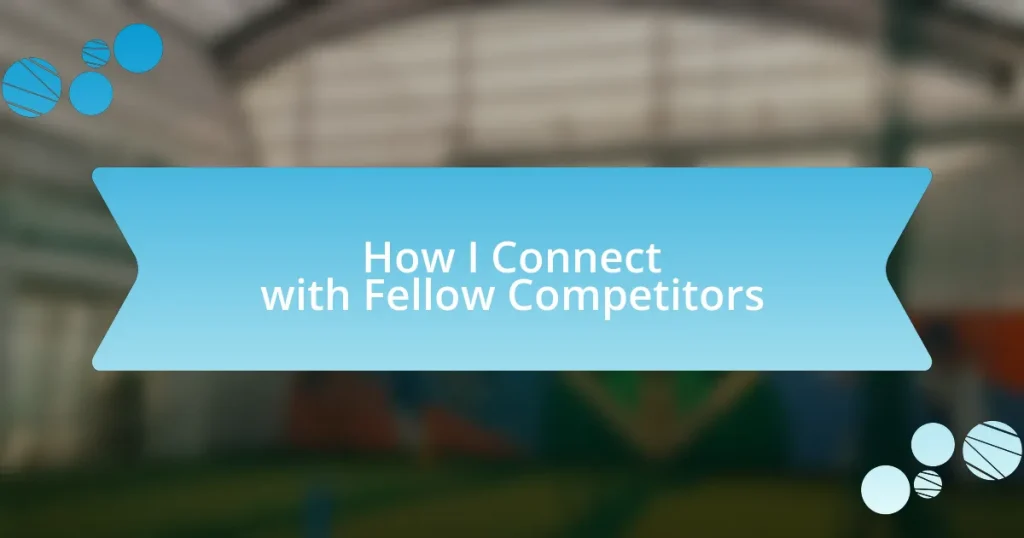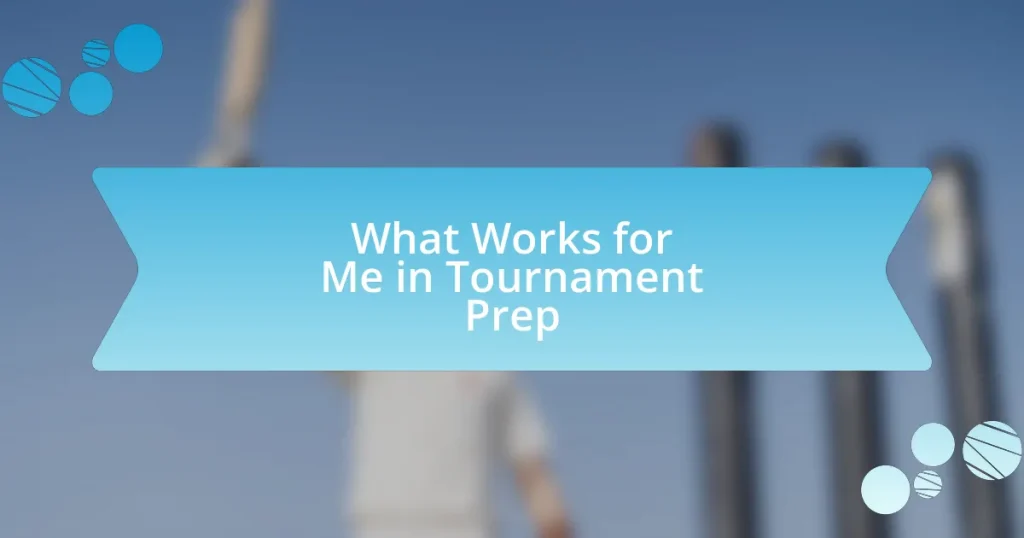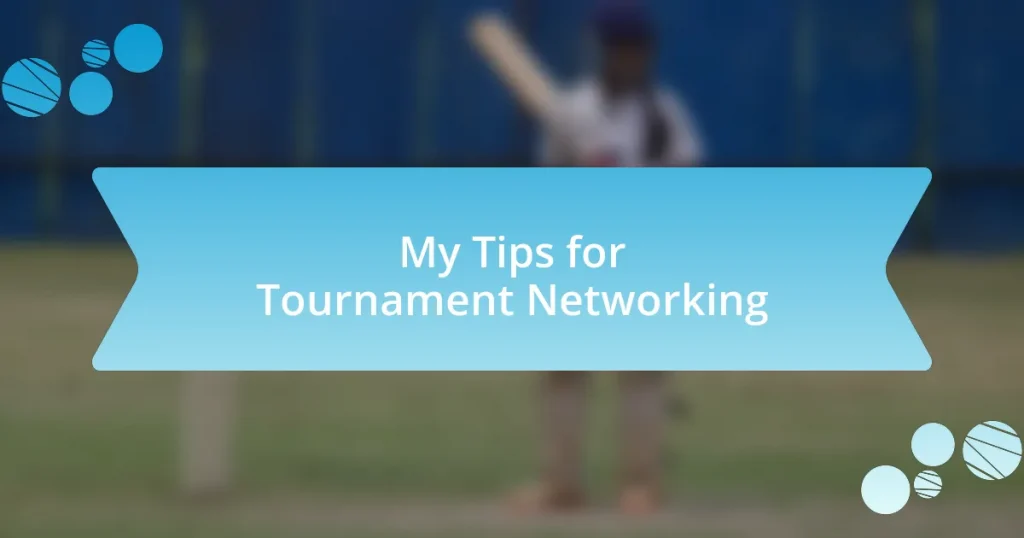Key takeaways:
- Networking builds lasting relationships that can lead to opportunities, collaborations, and mutual support.
- Effective conversation initiation includes compliments, open-ended questions, and shared personal stories to create rapport.
- Collaboration with competitors can enhance skills, foster trust, and shift perspectives from rivalry to partnership.
- Utilizing social media and regular check-ins helps maintain and deepen networking relationships over time.
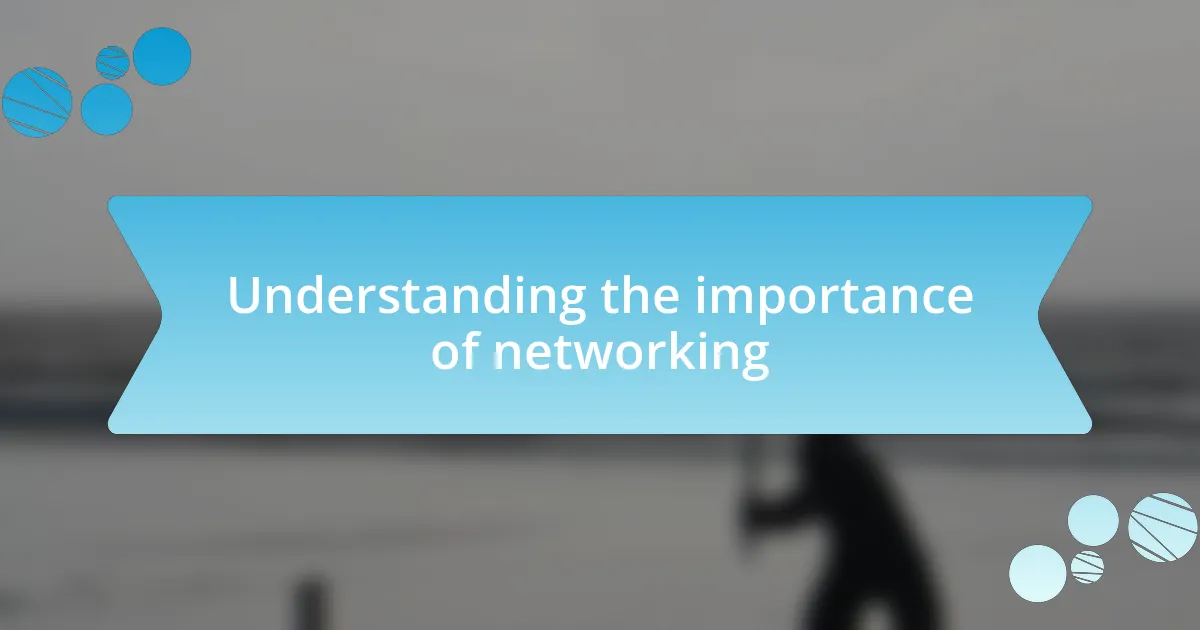
Understanding the importance of networking
Networking is crucial because it builds relationships that can lead to opportunities and collaborations. I still remember a competition where I connected with a fellow competitor over a shared challenge. That conversation not only provided insight into the challenges ahead but also blossomed into a mutual support system that has lasted for years.
When I look back at those moments, I see how networking isn’t just about exchanging business cards or LinkedIn connections; it’s about creating a community. Have you ever thought about how a simple conversation could open doors you didn’t even know existed? In my experience, those casual chats during downtime at events often lead to the most significant opportunities and lasting friendships.
Moreover, networking allows you to share knowledge and experiences that can accelerate your growth. I once learned a valuable tip from a competitor about time management that transformed my approach. By connecting with others, we not only challenge ourselves but also empower each other to reach greater heights. What have you learned from your fellow competitors that made a difference?
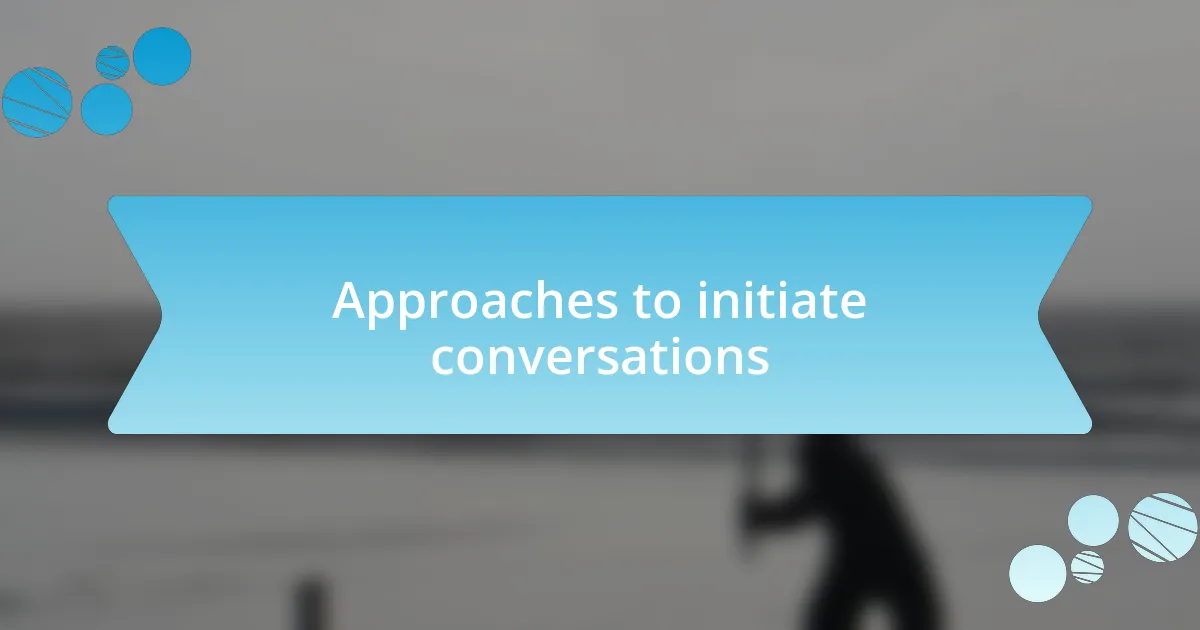
Approaches to initiate conversations
Approaching fellow competitors for conversation can initially feel daunting, but I’ve found that a few simple techniques can help break the ice. One effective approach is to start with a compliment about their work or performance, as it shows genuine interest. For example, I once remarked on a competitor’s innovative strategy that I admired, and it opened up a dialogue that revealed common interests and experiences.
Here are some strategies to initiate conversations effectively:
- Ask Open-Ended Questions: Inquire about their experiences or opinions, which encourages a more expansive discussion.
- Share a Relevant Personal Story: For instance, I often recount a challenge I faced during a competition. It invites others to share their own stories.
- Use Humor: A light-hearted comment about the competition atmosphere can ease tension and create a friendly vibe.
- Find Common Ground: Mentioning mutual connections or shared experiences can solidify a sense of camaraderie.
I remember once casually chatting with a competitor in the waiting area before a big event. We discussed our nerves and quickly discovered we both had dealt with a similar setback in the past. This not only eased my anxiety but also forged a supportive relationship that turned into a valuable friendship. It’s amazing how these interactions can shift from mere introductions to meaningful exchanges that enrich your journey.
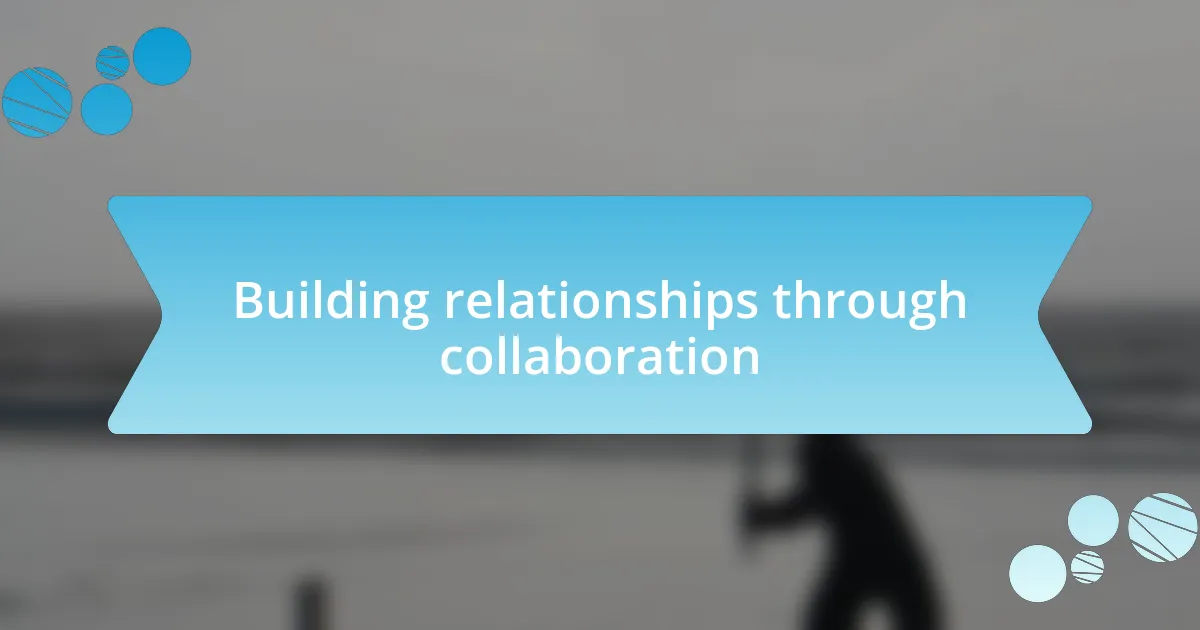
Building relationships through collaboration
Building relationships through collaboration can truly transform your competitive experience. I’ve experienced moments when joining forces with another competitor led to unexpected insights. For instance, during a regional competition, I collaborated with a rival to discuss techniques for managing stress. Sharing our approaches not only eased our individual pressures but also established a partnership where we could support one another during tense moments.
Collaboration can happen in various forms, and I’ve seen the effects firsthand. Pairing up for a practice session or brainstorming ideas for improving performance creates a unique environment. It’s fascinating how sharing tips and techniques not only enhances your skills but also cultivates trust and respect. One time, I teamed up with a fellow competitor to critique our performances; the constructive feedback we exchanged turned into a valuable learning experience and a friendship that lasted beyond that event.
The key lies in fostering an open mindset. When I shifted my perspective from viewing competitors as opponents to seeing them as allies, everything changed. This shift allowed me to connect on a deeper level. I vividly remember celebrating a small victory together with someone I once viewed as competition. We both recognized that our achievements didn’t diminish each other but rather highlighted the strength of our collaborative efforts.
| Type of Collaboration | Benefits |
|---|---|
| Practice Sessions | Enhances skills, builds camaraderie |
| Feedback Exchanges | Encourages growth, fosters trust |
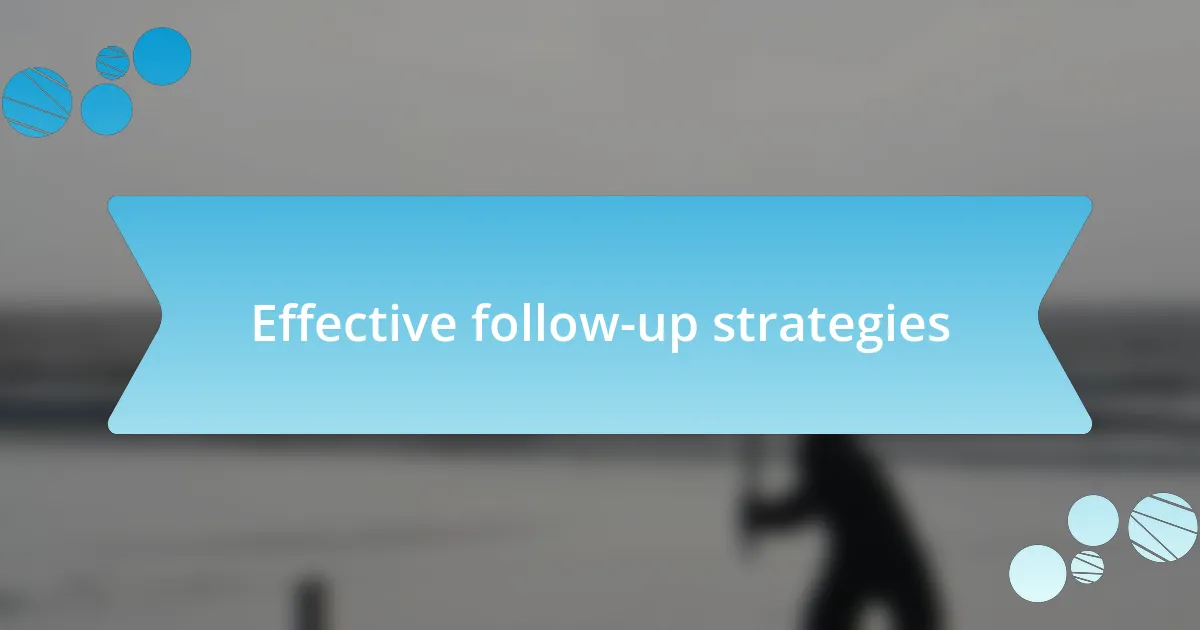
Effective follow-up strategies
Following up effectively is crucial for nurturing relationships with fellow competitors. I remember after participating in a challenging event, I sent a simple message to a competitor I’d bonded with—just a note expressing how much I appreciated our exchanges during the competition. That small gesture opened the door for future conversations, which reinforced our connection and allowed us to share ongoing tips and experiences. Have you ever wondered how a few words can transform a fleeting encounter into a lasting friendship?
Utilizing social media as a tool for follow-up can also pay dividends. After a particularly intense competition, I found myself scrolling through my feeds and connecting with several competitors online. With just a comment or a shared post, we were able to maintain our momentum of collaboration and encouragement. It turned a competitive atmosphere into a supportive community that extended beyond the event itself. Engaging in those digital spaces makes it easy to stay in touch, especially when moments of uncertainty arise.
Scheduling regular check-ins can be another effective follow-up strategy. I once set a monthly coffee catch-up with a competitor who became a good friend. During these meetings, we would discuss our progress and setbacks. It was both motivational and comforting to know that someone who understood the pressures of competition was there to share experiences. This consistent communication deepened our friendship and created an accountability system for both of us. Have you considered how regular touchpoints could enhance your connections and provide ongoing encouragement?
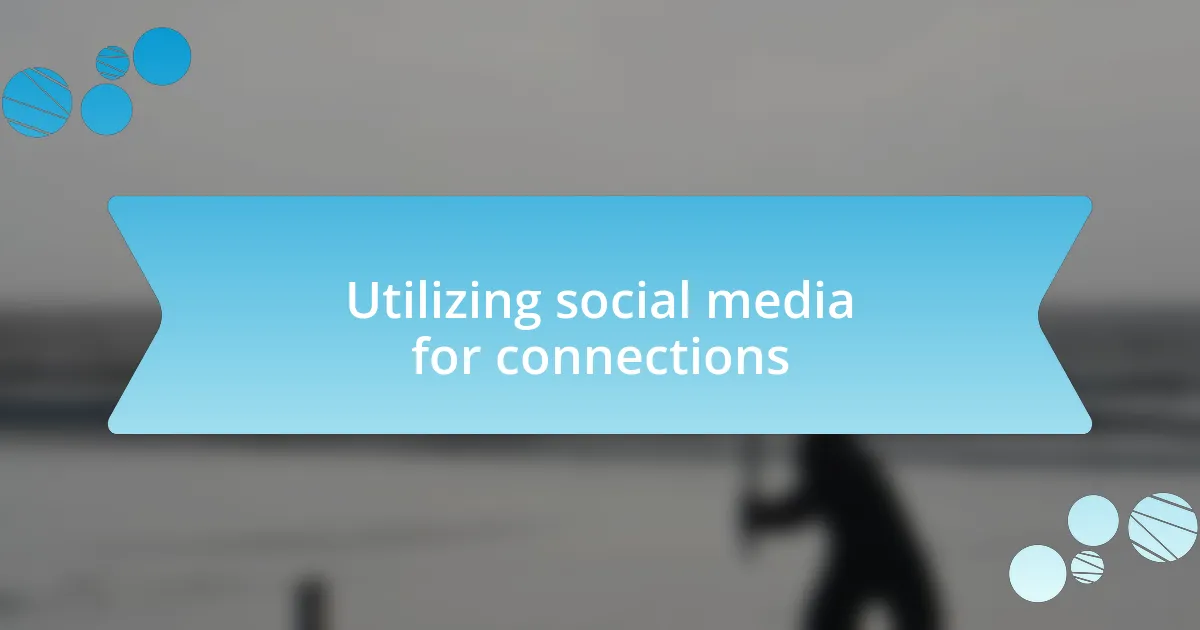
Utilizing social media for connections
Utilizing social media for connections has been transformative for me in building relationships with fellow competitors. I remember reaching out to someone I met at a tournament through Instagram. I commented on their recent victory post, expressing my admiration for their hard work. What surprised me was the flood of responses we exchanged, leading to a virtual high-five that solidified our connection beyond the competition.
Being active on platforms like LinkedIn can also foster deeper bonds. For instance, after connecting with a fellow competitor on that platform, I found myself scrolling through their articles and insights. I couldn’t resist reaching out to share my thoughts on a piece they wrote about resilience in competition. This not only strengthened our relationship but also opened doors for collaborative discussions on topics we both are passionate about. Have you ever thought about how commenting on a shared interest can lead to meaningful conversations?
It’s intriguing to think about how social media allows us to curate our networks. While scrolling through Twitter one day, I noticed a thread where competitors were sharing their training challenges. I jumped in to share my own story of overcoming a tough hurdle, and before I knew it, we were exchanging tips and supporting one another. It felt empowering to lean on each other during those honest conversations, reinforcing the notion that we’re all in this together, even in the face of competition.
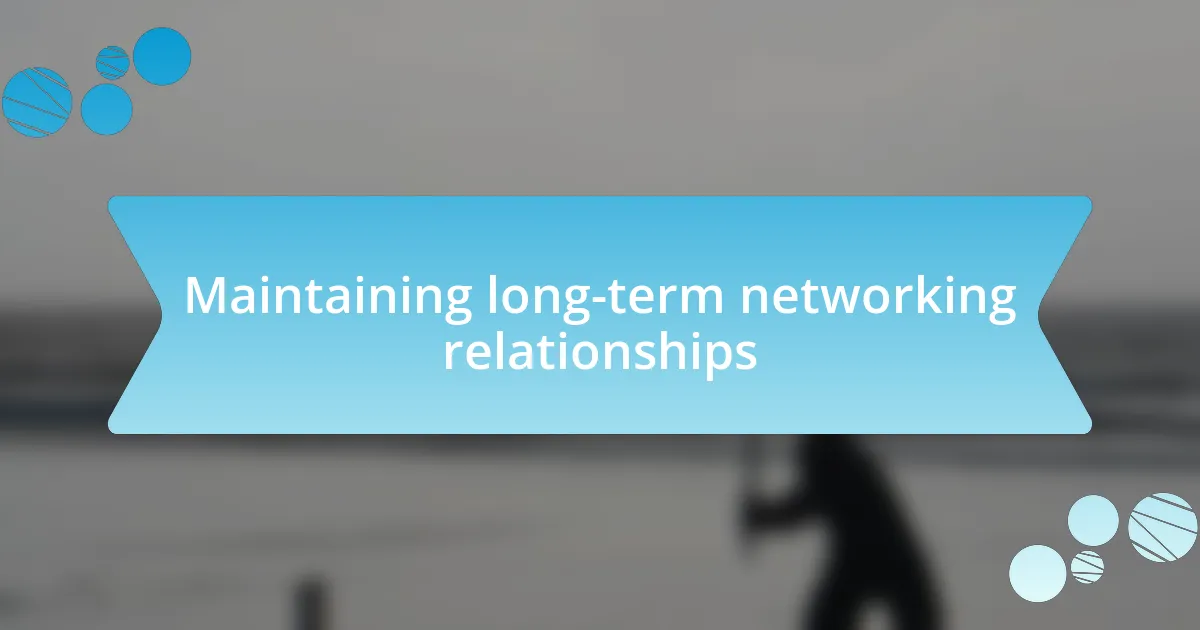
Maintaining long-term networking relationships
I’ve found that maintaining long-term networking relationships requires a deliberate effort to stay in touch. One effective method I’ve embraced is sending occasional check-in messages, sharing updates on my journey or simply asking how they’ve been. For instance, after a year of connecting with a fellow competitor, I reached out to congratulate her on a recent achievement. Not only did she appreciate the gesture, but it also reminded us of the shared struggles we experienced. Doesn’t it feel good to know that someone is cheering for you, even from afar?
Regularly engaging through shared experiences can also nourish these relationships. I actively participate in online forums where competitors discuss challenges and victories alike. Once, while attending a virtual race preparation session hosted by a fellow competitor, I felt a renewed sense of camaraderie. It sparked joy and reminded me that the bonds we form based on mutual experiences enhance our connection significantly. Have you ever participated in a group event that reignited your passion for a shared goal?
Furthermore, I’ve found that celebrating milestones together strengthens our ties. I’ve made it a habit to acknowledge important dates in my contacts’ lives—be it a competition anniversary or a personal achievement—by sending a simple message. This thoughtful recognition shows my commitment to our relationship, creating an emotional link that goes beyond competition. How often do we take a moment to appreciate each other’s journeys in this fast-paced world? It’s a small effort that pays back in loyalty and connection over time.










